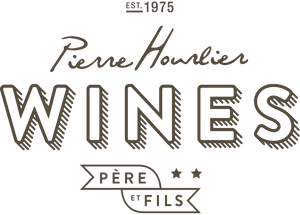Jurancon
Jurançon is a rare appellation for fine wine in France. It is not only rare due to its limited production but also thanks to its unique local grapes and traditional winemaking methods. The area may not be as well-known as France’s more prominent appellations, yet it is among the most prized by wine enthusiasts worldwide.
At the heart of the Pyrénées, Jurançon offers a different kind of wine - a fresh perspective on what fine wine can look and taste like. Whether dry or sweet, the region’s wines challenge the perceptions most wine lovers hold about fine wine.
History of Jurançon
Located in the Pyrénées-atlantiques department of southwest France, the commune of Jurançon spans less than 20 square kilometres of mountainous terrain with a unique terroir.
This secluded area was first settled by Gallo-Roman tribes and later became an important stronghold due to its strategic location - the Pyrénées form the natural border between Spain and France. Nevertheless, the rugged terrain and harsh continental climate proved ideal for cultivating high-quality grapes.
Jurançon was granted AOC status in 1936 for its renowned sweet wines. Dry wines were included in the appellation in 1975. The region’s wines were once celebrated in royal courts. Though their popularity has waned over time, their quality endures.
The Grapes in Jurançon
Jurançon is renowned for its white wines, which account for around 75% of the appellation’s total production. Today, roughly 650 hectares of vines stretch across 25 communes nestled in the hills and valleys of the Pyrénées.
Gros Manseng and Petit Manseng are among the region’s most prominent white varieties, followed by the equally distinctive Camaralet, Lauzet, Courbu Blanc and Petit Courbu. Manseng grapes are especially prized for their high natural sugar content, which is further concentrated as the grapes are dried to create lusciously sweet wine. Manseng grapes make up at least fifty per cent of any wine bearing the Jurançon appellation.
The Terroir in Jurançon
Jurançon is a mountainous region. Despite the influence of the Atlantic Ocean, rainfall is limited, summers are hot, and winters are cold. The Pyrénées shelter some of the world’s most spectacular vineyards.
Despite its small size, Jurançon has a varied terroir. The finest grapes grow at higher altitudes, on the hillsides overlooking the region’s picturesque towns. Limestone and a thin clay topsoil force the grapevines to dig deep for water, resulting in concentrated grapes. The valleys are wetter, with richer soils, making them more suitable for less demanding grape varieties.
Human intervention plays an important role in shaping a region’s terroir. In Jurançon, winemakers harvest their grapes late in the season, sometimes as late as early November, when the fruit has shrivelled under the cloudless sky. This is the secret behind the appellation’s famous sweet late-harvest wines.
Wine Styles in Jurançon
Jurançon is renowned for its sweet white wines, made from Manseng varieties. These wines typically contain between 40 and 55 grams of sugar per litre. The grapes are naturally aromatic, complementing the sweetness with fruity and floral aromas, while their acidity balances it elegantly.
Today, the region’s dry wines are becoming more popular than their sweet counterparts. These wines are equally aromatic and refreshing, yet dry and elegant on the palate, with a medium body and a long finish.
Blends are more common than single-variety wines in Jurançon, and they rank among the most interesting white wines in France, whether sweet or dry.
-
Jurancon Sec: Domaine Nigri ConfluenceWith rare grapes Camaralet and Lauzet, blended with Gros Manseng, this complex dry wine has aromas of spice and pepper, a hint of acidity, and a delicious flavour of apple.
- £20.45
- £20.45
- Unit price
- per


